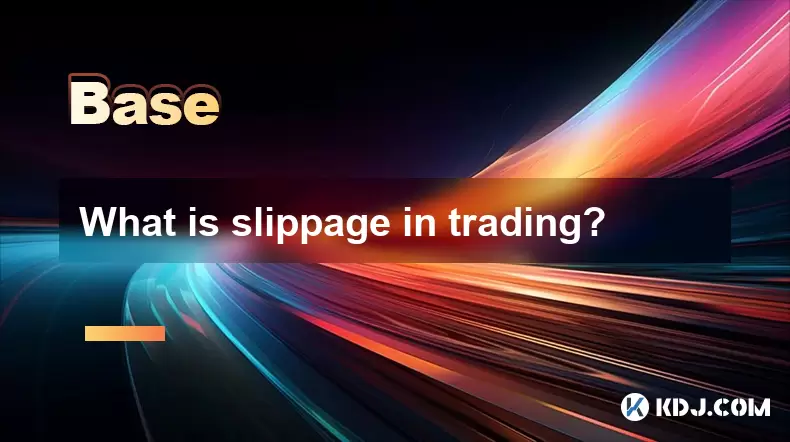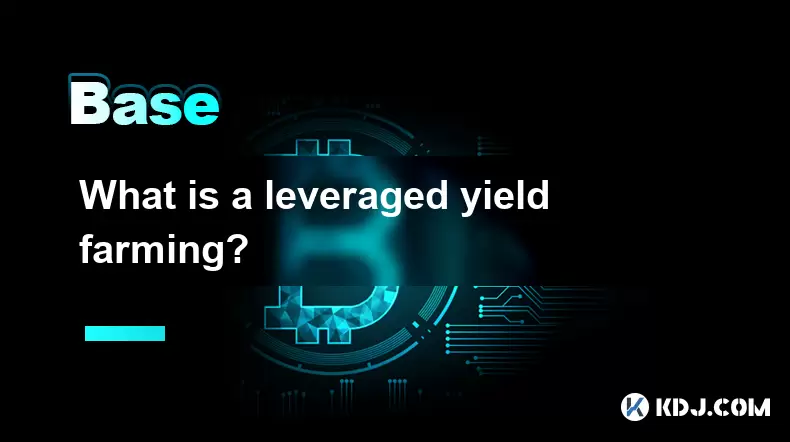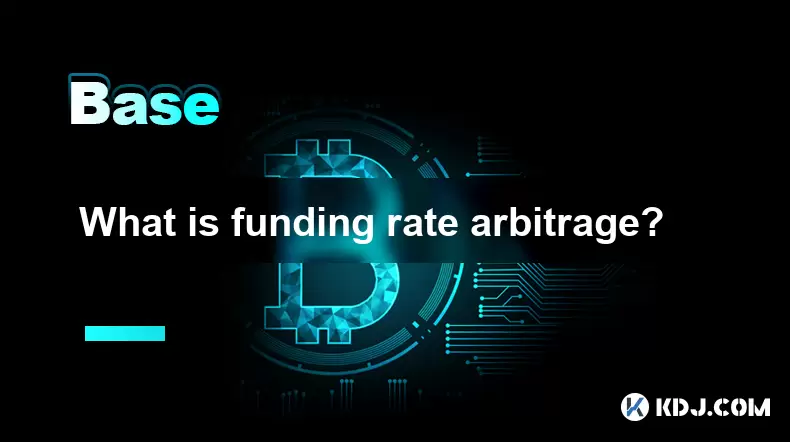-
 Bitcoin
Bitcoin $108,043.3894
-1.71% -
 Ethereum
Ethereum $2,519.1878
-3.09% -
 Tether USDt
Tether USDt $1.0004
-0.01% -
 XRP
XRP $2.2231
-2.72% -
 BNB
BNB $655.3607
-1.06% -
 Solana
Solana $148.3620
-2.84% -
 USDC
USDC $1.0000
0.00% -
 TRON
TRON $0.2838
-0.37% -
 Dogecoin
Dogecoin $0.1648
-4.79% -
 Cardano
Cardano $0.5759
-3.97% -
 Hyperliquid
Hyperliquid $38.4598
-5.19% -
 Sui
Sui $2.9005
-4.22% -
 Bitcoin Cash
Bitcoin Cash $481.1531
-3.80% -
 Chainlink
Chainlink $13.1936
-4.50% -
 UNUS SED LEO
UNUS SED LEO $9.0471
0.41% -
 Avalanche
Avalanche $17.9444
-4.20% -
 Stellar
Stellar $0.2378
-2.60% -
 Toncoin
Toncoin $2.7850
-3.38% -
 Shiba Inu
Shiba Inu $0.0...01148
-3.75% -
 Litecoin
Litecoin $87.3159
-3.73% -
 Hedera
Hedera $0.1557
-3.02% -
 Monero
Monero $314.0980
-1.98% -
 Polkadot
Polkadot $3.3909
-5.10% -
 Dai
Dai $1.0001
0.00% -
 Ethena USDe
Ethena USDe $1.0002
-0.02% -
 Bitget Token
Bitget Token $4.4147
-3.74% -
 Uniswap
Uniswap $6.9933
-9.59% -
 Pepe
Pepe $0.0...09661
-6.72% -
 Aave
Aave $264.1417
-6.16% -
 Pi
Pi $0.4705
-5.23%
What is slippage in trading?
Slippage in trading occurs when an order executes at a different price than expected, often due to market volatility or low liquidity.
Jul 04, 2025 at 10:49 am

Understanding the Concept of Slippage
In the realm of trading, particularly within the cryptocurrency market, slippage refers to the difference between the expected price of a trade and the actual price at which the trade is executed. This phenomenon occurs due to various factors such as market volatility, liquidity levels, and execution speed. In fast-moving markets, especially during high volatility, prices can change rapidly, making it challenging for traders to get their orders filled at the desired price.
Why Slippage Happens in Crypto Trading
Several elements contribute to slippage in cryptocurrency trading. One primary cause is low liquidity. When there are fewer buyers or sellers in the market, executing large orders can significantly affect the price. Additionally, sudden spikes in market activity, often triggered by news events or macroeconomic data, can lead to rapid price fluctuations. Traders using market orders without specifying a limit may find themselves subject to slippage when their order executes at less favorable prices than anticipated.
Types of Orders and Their Impact on Slippage
Understanding the types of orders used in trading can help mitigate slippage. A market order executes immediately at the best available price, which can lead to slippage during volatile conditions. On the other hand, a limit order allows traders to set the maximum or minimum price they are willing to buy or sell at, providing more control over execution prices. However, if the market moves quickly past the specified limit, the order might not execute at all, leading to missed opportunities.
- Use limit orders to specify acceptable price ranges.
- Set price thresholds based on historical volatility.
- Monitor order book depth to gauge potential slippage.
- Consider using stop-limit orders to manage risk while controlling execution prices.
Measuring and Calculating Slippage
To assess the impact of slippage, traders often calculate the difference between the intended price and the executed price. The formula for slippage is straightforward:
Slippage = (Executed Price - Expected Price) / Expected Price 100*
This percentage helps traders understand how much their trades deviated from expectations. High-frequency traders and institutional investors closely monitor this metric to optimize their execution strategies and reduce costs associated with slippage.
How Market Conditions Influence Slippage
Market conditions play a crucial role in determining the extent of slippage experienced during trading. During periods of high volatility, such as major news releases or regulatory announcements, slippage becomes more pronounced. Conversely, in stable market conditions with ample liquidity, slippage tends to be minimal. Traders should be aware of upcoming events that could trigger volatility and adjust their trading strategies accordingly.
Strategies to Minimize Slippage
To reduce the impact of slippage, traders can adopt several strategies:
- Trade during peak hours when liquidity is highest.
- Break large orders into smaller ones to avoid significant price movements.
- Utilize algorithmic trading tools designed to minimize slippage.
- Choose exchanges with deep order books and high trading volumes.
These approaches help traders navigate the complexities of the market while aiming for better execution prices.
Frequently Asked Questions
Q: Is slippage always negative?
No, slippage can be both positive and negative. Positive slippage occurs when the executed price is better than the expected price, while negative slippage happens when the execution price is worse.
Q: Can I completely eliminate slippage?
While it's difficult to eliminate slippage entirely, using limit orders and trading during high-liquidity periods can significantly reduce its occurrence.
Q: Does slippage apply only to cryptocurrencies?
No, slippage is a common phenomenon across all financial markets, including stocks, forex, and commodities. However, its impact can vary depending on the asset's liquidity and market conditions.
Q: How does slippage affect my trading strategy?
Frequent exposure to slippage can erode profits over time. It’s essential to factor in slippage when backtesting strategies or setting profit targets to ensure realistic performance expectations.
Disclaimer:info@kdj.com
The information provided is not trading advice. kdj.com does not assume any responsibility for any investments made based on the information provided in this article. Cryptocurrencies are highly volatile and it is highly recommended that you invest with caution after thorough research!
If you believe that the content used on this website infringes your copyright, please contact us immediately (info@kdj.com) and we will delete it promptly.
- Bitcoin's Pattern Break: Are HODLers the Key to the Next Surge?
- 2025-07-04 18:50:12
- Bitcoin Price, Trump's Bill, and the $150K Dream: A NYC Take
- 2025-07-04 19:50:12
- Ethereum, LILPEPE, and the July Bounce: Will Pepe Steal ETH's Thunder?
- 2025-07-04 19:10:12
- Binance Institutional Loans: Unlocking 4x Leverage and Zero Interest for Whales
- 2025-07-04 19:15:12
- Bitcoin Bull Run: Analysts Eye Peak in Late 2025?
- 2025-07-04 19:20:13
- Pepe Indicators, Bullish Forecast: Can the Meme Coin Rally?
- 2025-07-04 19:25:12
Related knowledge

What is a user-generated content (UGC) NFT platform?
Jul 04,2025 at 01:49pm
Understanding the Concept of a UGC NFT PlatformA user-generated content (UGC) NFT platform is a digital marketplace or ecosystem where users can create, mint, and trade non-fungible tokens (NFTs) that represent ownership of original digital content they produce. Unlike traditional NFT platforms where creators often include professional artists or develo...

What is a token generation event (TGE)?
Jul 04,2025 at 07:14am
Understanding the Basics of a Token Generation Event (TGE)A Token Generation Event (TGE) refers to the process through which a blockchain project creates and distributes its native tokens to investors, participants, or stakeholders. This event is often associated with new cryptocurrency projects launching on platforms like Ethereum, Binance Smart Chain,...

What is a block explorer API?
Jul 04,2025 at 05:07am
Understanding the Role of a Block Explorer APIA block explorer API is a crucial interface that enables developers and users to interact programmatically with blockchain data. Unlike traditional APIs used in web services, a block explorer API specifically provides access to blockchain-related information such as transaction details, wallet balances, bloc...

What is a leveraged yield farming?
Jul 04,2025 at 09:36am
Understanding Leveraged Yield FarmingLeveraged yield farming is a more advanced form of yield farming, which itself is a popular method in the decentralized finance (DeFi) ecosystem to earn returns by providing liquidity to various protocols. In traditional yield farming, users deposit tokens into a DeFi platform and earn rewards in return, often in the...

What is open interest in derivatives?
Jul 03,2025 at 02:49pm
Understanding Open Interest in DerivativesOpen interest is a critical metric used in the cryptocurrency derivatives market, particularly when analyzing futures and options contracts. It represents the total number of outstanding contracts that have not been settled or closed by either party involved. Unlike trading volume, which counts all trades made i...

What is funding rate arbitrage?
Jul 04,2025 at 11:43am
Understanding Funding Rate Arbitrage in the Cryptocurrency MarketFunding rate arbitrage is a trading strategy employed by crypto traders to exploit differences in funding rates across various perpetual futures exchanges. In perpetual contracts, funding rates are periodic payments made between long and short traders depending on whether the price of the ...

What is a user-generated content (UGC) NFT platform?
Jul 04,2025 at 01:49pm
Understanding the Concept of a UGC NFT PlatformA user-generated content (UGC) NFT platform is a digital marketplace or ecosystem where users can create, mint, and trade non-fungible tokens (NFTs) that represent ownership of original digital content they produce. Unlike traditional NFT platforms where creators often include professional artists or develo...

What is a token generation event (TGE)?
Jul 04,2025 at 07:14am
Understanding the Basics of a Token Generation Event (TGE)A Token Generation Event (TGE) refers to the process through which a blockchain project creates and distributes its native tokens to investors, participants, or stakeholders. This event is often associated with new cryptocurrency projects launching on platforms like Ethereum, Binance Smart Chain,...

What is a block explorer API?
Jul 04,2025 at 05:07am
Understanding the Role of a Block Explorer APIA block explorer API is a crucial interface that enables developers and users to interact programmatically with blockchain data. Unlike traditional APIs used in web services, a block explorer API specifically provides access to blockchain-related information such as transaction details, wallet balances, bloc...

What is a leveraged yield farming?
Jul 04,2025 at 09:36am
Understanding Leveraged Yield FarmingLeveraged yield farming is a more advanced form of yield farming, which itself is a popular method in the decentralized finance (DeFi) ecosystem to earn returns by providing liquidity to various protocols. In traditional yield farming, users deposit tokens into a DeFi platform and earn rewards in return, often in the...

What is open interest in derivatives?
Jul 03,2025 at 02:49pm
Understanding Open Interest in DerivativesOpen interest is a critical metric used in the cryptocurrency derivatives market, particularly when analyzing futures and options contracts. It represents the total number of outstanding contracts that have not been settled or closed by either party involved. Unlike trading volume, which counts all trades made i...

What is funding rate arbitrage?
Jul 04,2025 at 11:43am
Understanding Funding Rate Arbitrage in the Cryptocurrency MarketFunding rate arbitrage is a trading strategy employed by crypto traders to exploit differences in funding rates across various perpetual futures exchanges. In perpetual contracts, funding rates are periodic payments made between long and short traders depending on whether the price of the ...
See all articles

























































































